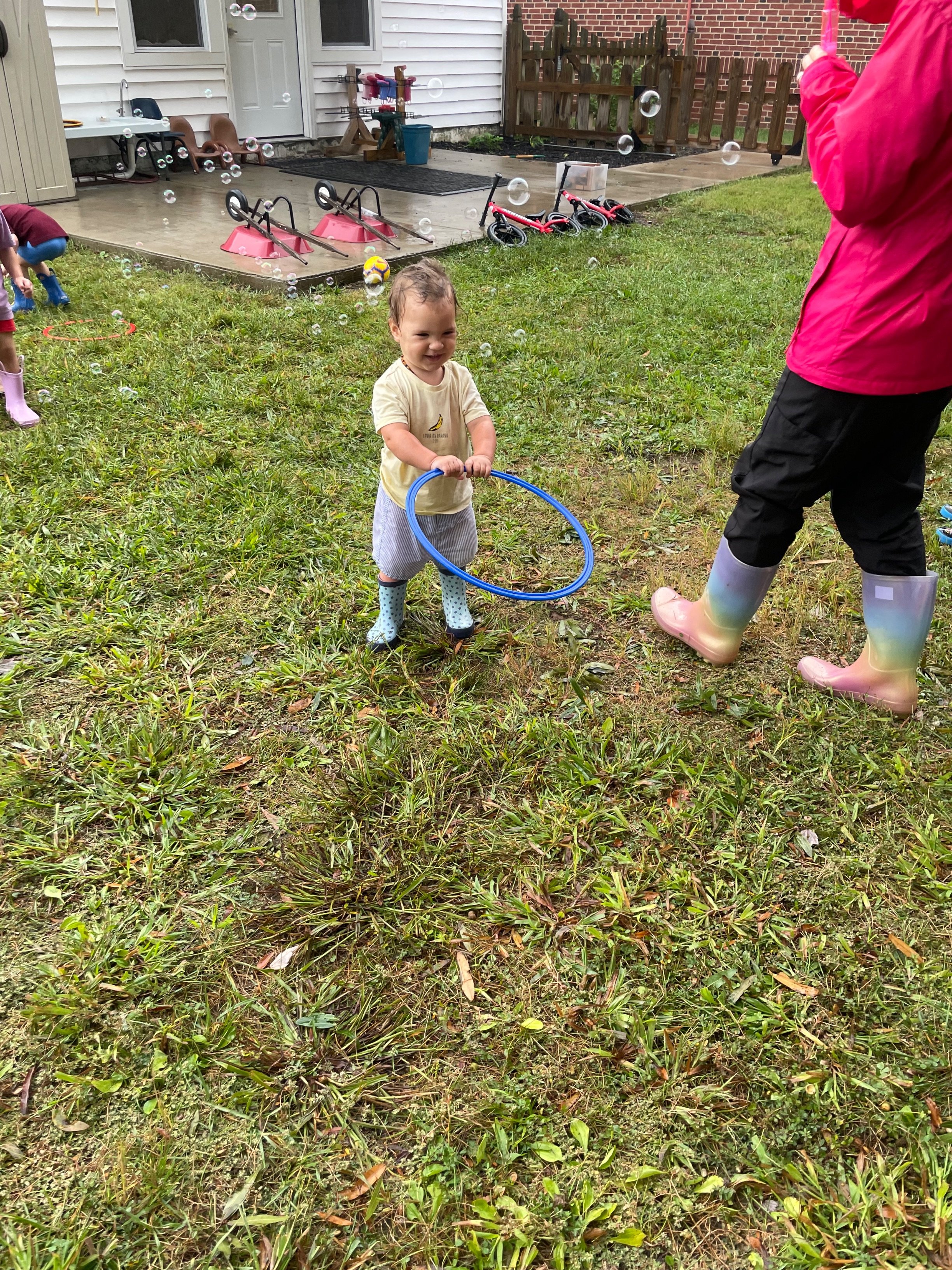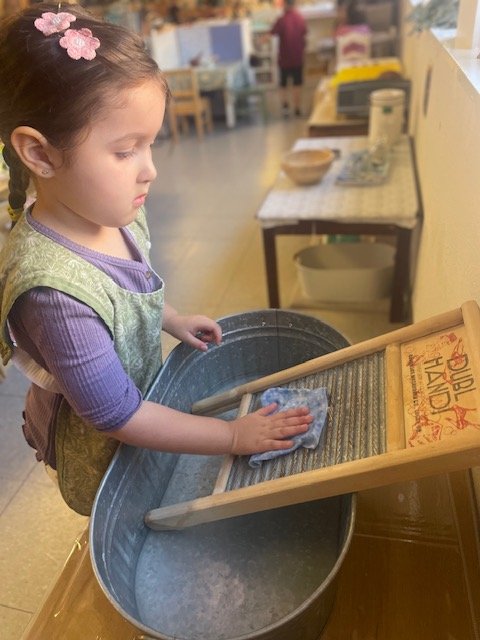The Young Children’s House is embracing the fall-like weather, rain, and special moments. This week has been fun! The fall weather has been such a treat—cool and crisp, with that perfect autumn feeling that makes being outside extra enjoyable. And the children? They’ve been fully embracing the season with open arms, finding joy in every little moment.
Their attention has been drawn to something as simple as acorns, and it’s been incredible to watch. Every morning, they’ve spent hours outside gathering and collecting them. You should see how carefully they pick them up—sometimes cradling them in their hands or even stuffing their pockets, clothes, buckets, and wheelbarrows. It’s like a treasure hunt that never ends! They’ve been counting them over and over (and usually losing track, only to start again), completely fascinated by how acorns fall from the branches or hide beneath the grass. It’s been wonderful to see their curiosity and teamwork in action—some working side by side, others independently, all lost in the wonder of this simple fall activity. There are so many acorns around that it feels like they could explore them forever!
And today, despite the rain, the children didn’t miss a beat. It was raining, but they were just as eager to be outside. Honestly, they didn’t mind getting wet at all! For many of them, it seemed like the rain added an extra layer of fun—splashing in the puddles, watching the droplets fall, and getting completely soaked with joy. It reminded me of how much they enjoy our water activities, except this time, they were playing with the rain itself. Their enthusiasm was contagious, and it’s a great reminder to dress your child for all kinds of weather, because no matter what’s happening outside, they are always ready to dive in and explore!
We also had a special moment this week that I’m happy to share with you. We introduced the lighting of the candle at our prayer table, which felt particularly meaningful. Although most of our prayer services have been outside, this week we gathered indoors for this moment, and the flickering candlelight seemed to captivate the children in a way that was contemplative. There was something about the gentle glow of the flame that held their attention—it was peaceful and I could see how much they were drawn to it. It was a simple, yet beautiful, moment that brought a calm reflective ponder to our morning.
I’m so grateful to see how much the children are getting from their time outdoors and from these shared experiences. As we move deeper into fall, I’m excited to see what other discoveries await and what the children will reveal to us adults. From acorns to rainy-day adventures to moments of quiet reflection, this season has already brought so much joy, and I know there’s more to come!









